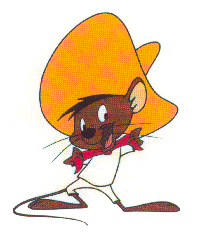
-Dora The Explorer
Created in 1999, Dora the Explorer is Nickelodeon's Latina heroine. Dora is a 7-year-old child who switches between English and Spanish while undertaking adventures along with a cast of human and non-human characters. She is held to be a role model for young Latin American children, particularly little girls. Dora merchandise continues to enjoy high sales-outselling products from Barbie, Winnie the Pooh, Spider Man, and more dolls than the caucasian looking Sleeping Beauty, Snow White and Cinderella 6.
While Dora is decidedly non-white (as is her friend Diego) and speaks Spanish, she enjoys high ratings among white children. Watched by 21 million people in the United States with only 3 million of those viewers Latino children aged 2-11 7 , the series was the
first to debut at the same time in many regions around the world; it premiered in 22
Latin American countries when it first appeared on Nickelodeon. Dora was originally conceived as a way to start children 4-7 in alternate language learning, math, and problem solving skills. When it debuted on
www.nickjr.com a translator was also included that allowed children to listen to words in
Spanish and English. The employment of a Latina voice actress-Kathleen Herles is a daughter of Peruvian immigrants-denotes a burgeoning trend of Latino actors playing Latino characters. Nickelodeon, the channel that airs Dora, has held Hispanic Heratige celebrations in New York, Miami, Los Angeles, Chicago, and Huston and even employs an agency called "Latin Force."8 The cartoon, “encourages viewer awareness of the Hispanic culture and makes computers and technology more familiar to preschoolers” 14. Dora herself lives and interacts with children inside a virtual computer, which they can access through television viewing. David Perez, CEO of Latin Force has acknowledged Dora as an "icon" who acts as a "positive role model" and points to her biligualism as the source of her potential power.
Overall, this cartoon has been a strong contribution to positive representations of
Latinos in cartoons in recent years. It moves away from stereotypes that plague Latinos
in the media and instead is geared to a young audience that can learn about another
culture and language without bias.
